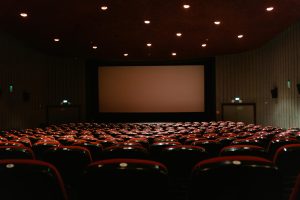AI-Designed Outfits: Will Algorithms Replace Human Stylists?
In the world of fashion, stylists have always been seen as the ultimate authority when it comes to creating the perfect outfits. With their eye for detail, knowledge of current trends, and ability to effortlessly mix and match, they have been highly sought after by celebrities, models, and brands alike. However, with advancements in technology, there has been a growing buzz around AI-designed outfits and the possibility that algorithms will replace human stylists in the future. This begs the question: will AI really take over the world of fashion and replace human stylists? Let’s delve deeper and find out.
The Rise of AI in Fashion
Artificial Intelligence, or AI, has been making its way into various industries, including fashion. It is often used for data analysis, predicting consumer behavior, and enhancing the overall shopping experience. But more recently, AI has been taking on a more creative role – designing outfits.
Various fashion brands such as Under Armour, Amazon, and H&M have already started using AI to generate and design clothing. By feeding the algorithm with data on consumer preferences and current fashion trends, they can create clothing pieces that are most likely to sell. This not only saves time and resources but also ensures that the products are in demand.
The Advantages of AI-Designed Outfits
Efficiency and Speed
Sifting through countless clothing pieces, accessories, and styles to create the perfect outfit can be a time-consuming process for human stylists. However, AI algorithms can instantly analyze vast amounts of data to provide multiple outfit options in a matter of seconds. This allows for faster decision-making, especially in time-sensitive situations like creating looks for fashion shoots or events.
Personalization
AI can also use individual consumer data to personalize outfit recommendations. By analyzing factors like body type, skin tone, and style preferences, AI algorithms can suggest outfits that cater to the specific needs and tastes of the consumer. This saves time for customers who do not have to browse through endless options and can instantly find the perfect outfit for them.
Cost-Effectiveness
Using AI to design outfits can potentially reduce costs for fashion brands. With algorithms doing most of the work, there is less reliance on human stylists, who often come with higher salary requirements. This could also lead to cost savings for consumers, as AI-designed clothing pieces are likely to be more affordable compared to those created by human stylists.
The Limitations of AI in Fashion
Creativity and Intuition
One of the main concerns with AI-designed outfits is the lack of creativity and intuition. Human stylists often rely on their personal taste, ingenuity, and understanding of fashion to create unique and innovative outfits. While AI algorithms can analyze data and trends, they cannot replicate the same level of creativity and intuition that human stylists possess.
Emotional Connection
Fashion is ultimately an emotional experience. Whether it’s finding the perfect outfit for a special occasion or discovering a new style that makes us feel confident, there is a strong emotional connection when it comes to fashion. This connection is often lacking when it comes to AI-generated outfits, as they lack the human touch that creates a deeper emotional impact on consumers.
Fit and Quality
Fit and quality are crucial factors when it comes to fashion. Human stylists can ensure that the outfits they create fit well and are of good quality. This is not always the case with AI, as there is still a risk of ill-fitting and low-quality clothing pieces, especially when it comes to complex designs and fabrics that require human attention to detail.
The Future of AI-Designed Outfits
While AI has already made its way into the world of fashion, it is still in its early stages. The technology is continuously evolving and improving, and it is possible that AI-designed outfits will become more sophisticated and advanced in the future. However, it is unlikely that AI will completely replace human stylists. Instead, it is more plausible that AI and human stylists will work hand in hand to create the best possible outcome.
AI can assist with specific tasks such as data analysis and trend forecasting, while human stylists can bring their creativity and intuition to the table. Furthermore, for the fashion industry, it is important to strike a balance between AI technology and human touch to cater to different consumer needs and preferences.
In Conclusion
As technology continues to advance, AI-designed outfits will become more prevalent in the fashion industry. However, it is unlikely that algorithms will completely replace human stylists. There are still limitations to AI technology, including creativity, intuition, and emotional connection, that only human stylists can provide. Therefore, it is safe to say that the future of fashion lies in a collaborative effort between AI and human stylists.











